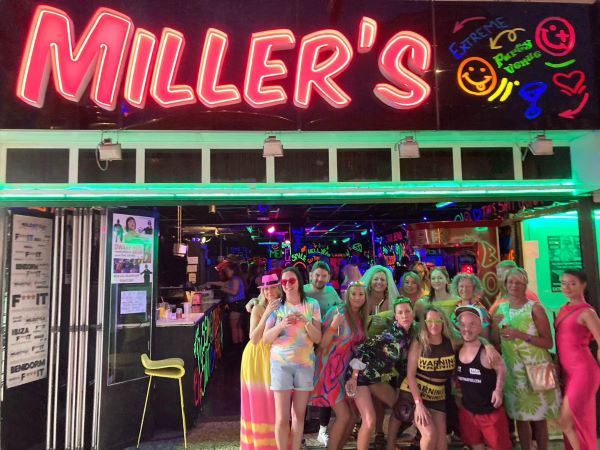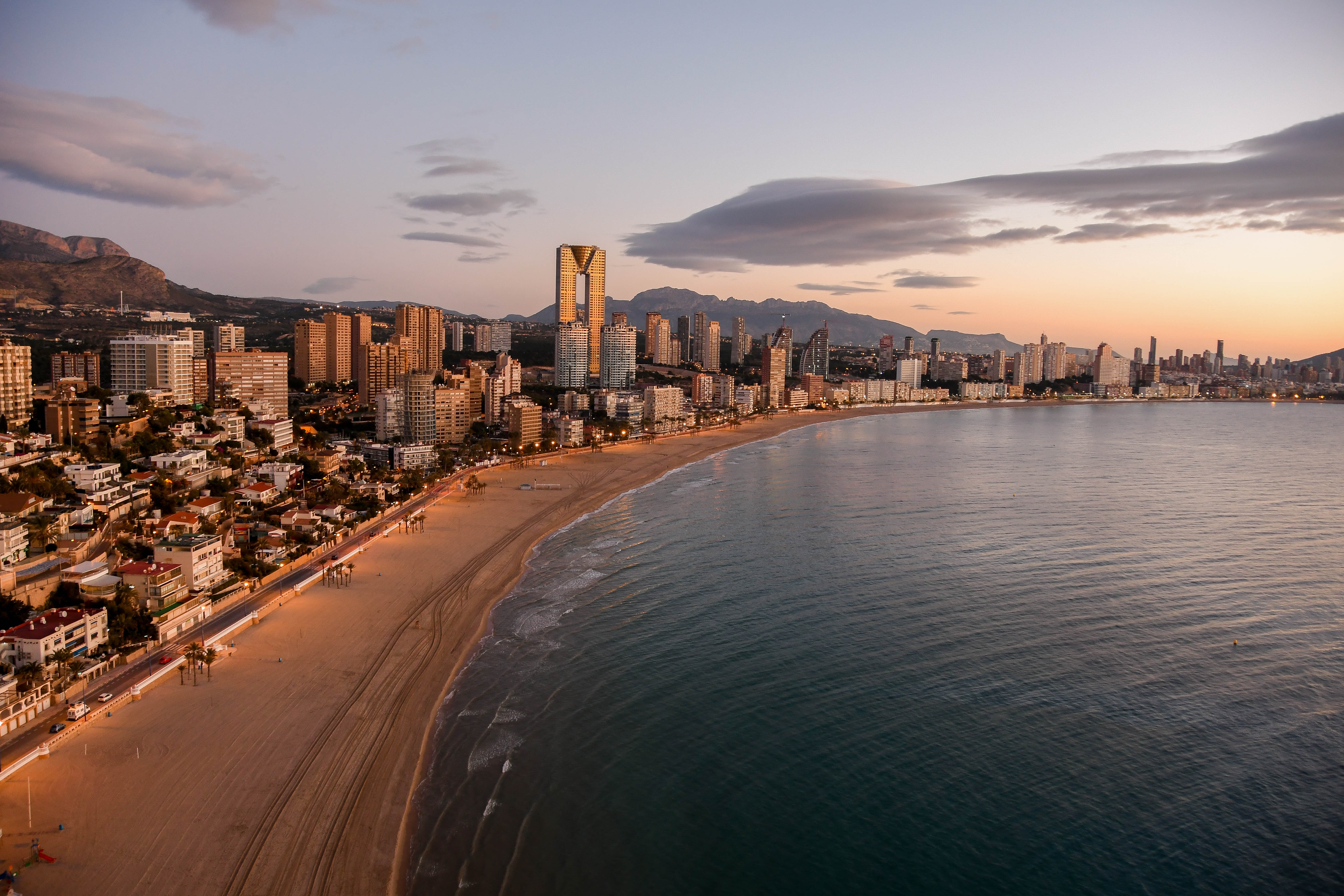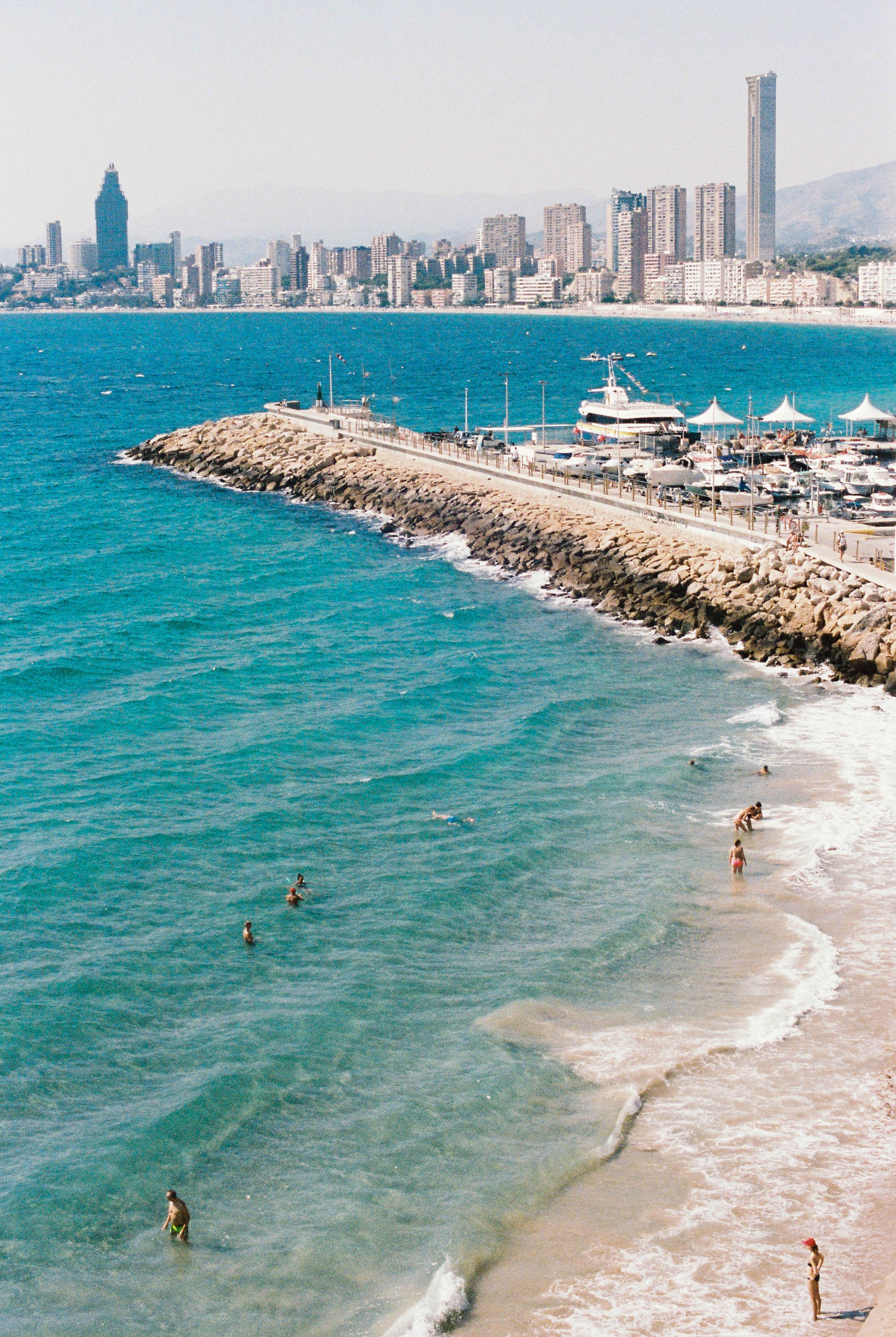
Smile in the Sun 2024 - At NOVA Cocktail bar, we are thrilled to unveil our newest annual fundraiser, "Smile In The Sun." Where Every transaction made through our Pay it Forward initiative contributes €0.50 to this year's summer fundraiser, #SmileInTheSun2024.
Whether you're commemorating a birthday, engagement, hen or stag do, or simply thriving in being in Benidorm, there's a way for everyone to participate. Simply scan the code on your table with table number and share around to get the ball rolling, all transactions come with a custom note option from the sender for some extra and sometimes embarrassing fun.

Join Benidorm Seriously Facebook Group
SMILE IN THE SUN 2024
Our 2024 fundraiser is dedicated to bringing joy to mentally affected youngsters across the UK by organising a getaway to Benidorm. Through donations, we cover transportation, accommodation, and expenses, providing these individuals with the opportunity to enjoy a revitalising break in the sun.
These trips are more than just vacations; they offer a chance for these youngsters to rediscover happiness, creating cherished memories and offering a much-needed escape from their everyday challenges, Join us in spreading smiles and making a positive impact through #SmileInTheSun2024.
Edward Elsden-Smith 20th April 1996 - 17th October 2022

Here you will find the first of our special offers available to Subscribers only.

Are you ready to Party? ... Then F***IT, or GO Home
Leading the way for Stag and Hen Parties in Benidorm are F***IT. Frank and his partner Jade are slowly turning Benidorm into Europe's Stag and Hen capital with increasing numbers year after year coming to Benidorm to enjoy everything this party town has to offer. Together they adopt a very hands on approach and unlike many other companies of this size, when you book with Fk it, you can be almost sure of meeting at least one of them, if not both, as they believe in the personal approach to make sure your stag and hen party is a massive success. Warning, you might end up inviting them to the wedding. So lets meet them,

If you are an active follower of Tik Tok, then you already know Frank. What you see is what you get. One of Tik Toks most followed channels for UK viewers, Frank will keep you up to date with what you need to know about the party scene. Or check out Franks TV Channel, Stag Man TV and his ongoing documentary "The Greatest Story Never Told".

Not only one of the main party organisers, but Jade likes to be part of the party. Currently Benidorm's number one Adult performer Jade will make sure that the Stag party rule, "what happens in Benidorm, stays in Benidorm" remains very firmly in place. Jade also hosts a very successful TIk Tok channel but it doesn't stop there, as she is also one of Europe's most successful performers on OnlyFans
So what exactly do F*** IT have to offer?
F***it leads the way over the competition primarily with two bars in town. Millers Bar is located in the heart of Benidorm nightlife, while Millers Beach Bar, is the local sun trap on the edge of the beach. Day or Night, Millers will be your Benidorm local. Even in Winter, when it can get a little bit chilly on the beach, we still like to sit near the sea. Just ask for the Bar with the Dome.

In the Sunlight hours, the place to be seen is at Millers Beach Bar. In Benidorm, the sun still shines even on cold days and the Millers bar dome heats to summer temperatures so you can still enjoy a drink by the beach.
F***IT or go home

Located on Calle La Panto, between Sinatra's Bar and Bollywood India Takeaway, Miller's is always buzzing with Stags and Hens having a great night out. with adult themed shows and numerous planned activities. This is the perfect place for the party animal to start their night.
You might even find it is the only nightlife you see as there is no reason to move on, when you are already having a good time.
F***IT take the stress out of organising your event, from arranging your accommodation through their own travel agency to Dwarf Hire, Strippers, Sex shows, Silent Discos, you name it, F*** IT do it.
For more information and booking links etc, visit their website here

Subscriptions
Due to requests from our members we have created an option to permit users to browse the site free of adverts in exchange for a small subscription. We also intend to gradually add special offers that will be only available to subscribers.
In fact the first of these offers is already in place
We have 10% off Abas Transfers.
We have 9% of Jet Ski Adventures, Crazy Sofa, Banana Boat, Flyfish and Parasailing
More will follow soon.
So for example, if you subscribe 2€ to browse the site free of adverts, you can get 1€ per person per direction OFF the standard price of an Abas Transfer.
- For one person travelling return that is a saving of 2€ 18.00€ instead of 20€. You will have gotten your money back straight away.
- If there are 4 passengers in your party travelling the price is 72€ instead of 80€. Not bad for a 2€ investment!
Question: So what happens if I subscribe, book the transfer and then cancel the subscription?
Answer: Your plan will work! You subscribe, book the transfer with the discount and then cancel the subscription. The offers will still be available until after the subscription month has passed, at which time the adverts will re-appear again and codes will no longer be usable. There is no request to return your discount, but there is also no refund of your subscription
Question: Then why should I continue with the subscription?
Answer: Because long term subscribers will be invited to join the VIP Lounge where the savings offered will be even higher. Remember we are starting with Airport transfers, but in time we hope to add Accommodation, Entradas and more.
*For example One Week for two people in Gemelos 22 Apartments in July is (at time of writing) priced at 749€ on one of the most popular booking sites. We will be offering VIP Members the same accommodation at 647€. That is a saving of 102€ when you might have subscribed 2€ per month for a year at a total of 24€.*
*please note this is an example only of what we hope to offer in the near future. But for now, feel free to contact admin if booking accommodation and we will see what we can do*
In time we hope to turn the VIP Lounge into an elite club of Holiday offers, but we need your support to do it. So for now, let's start with airport transfers and a few other activities.
Below you will find the options available.
Please note subscriptions can be cancelled at any time, but due to transaction charges we are not able to offer refunds.
Any cancelled subscription will be allowed to run until the end of the existing subscription period and will then be automatically cancelled.
Subscription Plans
Subscribers are able to browse the site without unsolicited adverts from Google etc. We will not hide adverts from our sponsors as these often offer special deals and discounts relevant to your holiday.
| Duration: | 1 Month |
| Price: | £2.00 |
Subscribers are able to browse the site without unsolicited adverts from Google etc. We will not hide adverts from our sponsors as these often offer special deals and discounts relevant to your holiday. You can save 25% by paying for the full year in advance
| Duration: | 12 Months |
| Price: | £18.00 |
Family Plans allow you to add additional family members or Friends to your subscription
Subscribers are able to browse the site without unsolicited adverts from Google etc. We will not hide adverts from our sponsors as these often offer special deals and discounts relevant to your holiday.
| Duration: | 1 Month |
| Price: | £3.00 |
Family Plans allow you to add additional family members or Friends to your subscription
Subscribers are able to browse the site without unsolicited adverts from Google etc. We will not hide adverts from our sponsors as these often offer special deals and discounts relevant to your holiday. You can save 25% by paying for the full year in advance
| Duration: | 12 Months |
| Price: | £25.00 |
Business users will be given free subscriptions if they require them. We do not expect you to pay twice. Just contact a member of admin
Unwinding in Benidorm: A Guide to Leisurely Evenings
Benidorm, a gem along the Costa Blanca, is famed for its sun-soaked beaches and vibrant nightlife. But as the sun sets, this seaside town becomes a haven for those seeking a laid-back evening. From leisurely dining experiences to tranquil strolls by the sea, let's explore how you can unwind in Benidorm during the evenings.

Dining Delights: Savour Local Flavours
Taste the Mediterranean
Benidorm's culinary scene is a delightful mix of traditional Spanish flavours and Mediterranean influences at restaurants. Begin your evening with a visit to a local eatery. Here, you can enjoy a leisurely meal, savouring dishes like 'paella,' a fragrant rice dish brimming with seafood, or 'tapas,' small plates perfect for sharing.
Beachside Cafés
After dinner, why not head to a beachside café? Picture yourself sipping a soothing 'café con leche' while listening to the gentle waves. These spots provide a relaxing ambiance, perfect for reflecting on your day or planning tomorrow’s adventures. Watch the world go by as the sun sets, bathing the sea in golden hues, offering a serene end to your evening. These cafés are ideal for a peaceful nightcap or a quiet chat with friends.
Relaxation and Entertainment
Unwind with a Good Book
Sometimes, the best way to relax is with a good book. Whether on your balcony or a quiet corner of a café, losing yourself in a story is a delightful way to spend the evening. Let the narrative transport you to another world as the gentle sea breeze or the soft murmur of café chatter forms a soothing background. There's nothing quite like the joy of a good book to help you wind down and escape the hustle of everyday life.
Online Games: A Quiet Night In
For those evenings when you're keen on staying in, the digital world offers a variety of engaging pastimes. You might start with a classic like chess, a timeless game where strategy and foresight reign supreme. Alternatively, you could explore the imaginative realms of online role-playing games, where you can embark on epic quests and create your own stories. If you're in the mood for something more interactive, online trivia games can be fun to test your knowledge on various topics with friends or other players worldwide.
And if you're looking to switch gears, you could explore the world of online poker. This title blends skill and strategy, making it a captivating and intellectually engaging experience. With platforms like PokerStars readily available, learning about the various hand rankings in poker is particularly intriguing. For instance, traditional' high' poker rankings are used in poker variants like Hold’em and Omaha, while versions such as Omaha Hi/Lo adopt the 'Ace to Five' low hand rankings. Getting to grips with these different rankings can add an enjoyable and challenging aspect to your quiet night in.
Star Gazing
Why not end your evening by gazing up at the starry sky? Benidorm's beaches can be wonderfully peaceful at night, offering a perfect spot for some star gazing. Lay back on the soft sand, let the sound of the waves serenade you, and marvel at the celestial wonders above. It's a moment of tranquility where you can reflect, dream, or simply enjoy the beauty of the universe. This simple yet profound activity reminds us of the endless wonders surrounding us.
Scenic Walks: Embrace the Coastal Beauty
Stroll Along the Promenade
Benidorm's promenades, such as the famous Levante Beach walk, offer a serene setting for an evening stroll. The sound of the sea creates a calming backdrop as you meander along these paths, perhaps stopping to admire a street performer or capture a sunset photo. Feel the gentle sea breeze, enjoy the soft glow of streetlights, and observe the harmonious blend of tourists and locals alike. These strolls are perfect for unwinding and soaking in the laid-back coastal atmosphere.
Discover Charming Spots
For a more serene experience, explore some of the areas of Benidorm. The Old Town, for example, with its charming streets and quaint squares, is a wonderful place to wander as the day fades. Meander through narrow lanes lined with colorful houses stumble upon hidden art galleries, or simply sit at a secluded café to watch the world go by. These hidden corners offer a peaceful retreat from the bustling beachfront, allowing you to immerse yourself in the town's authentic charm.

In summary, evenings in Benidorm offer a treasure trove of experiences for those looking to relax and unwind. From indulging in local cuisine to enjoying a quiet game, there’s something for everyone. So, as you plan your nights in this vibrant town, remember there are countless ways to enjoy its quieter, more leisurely side.

